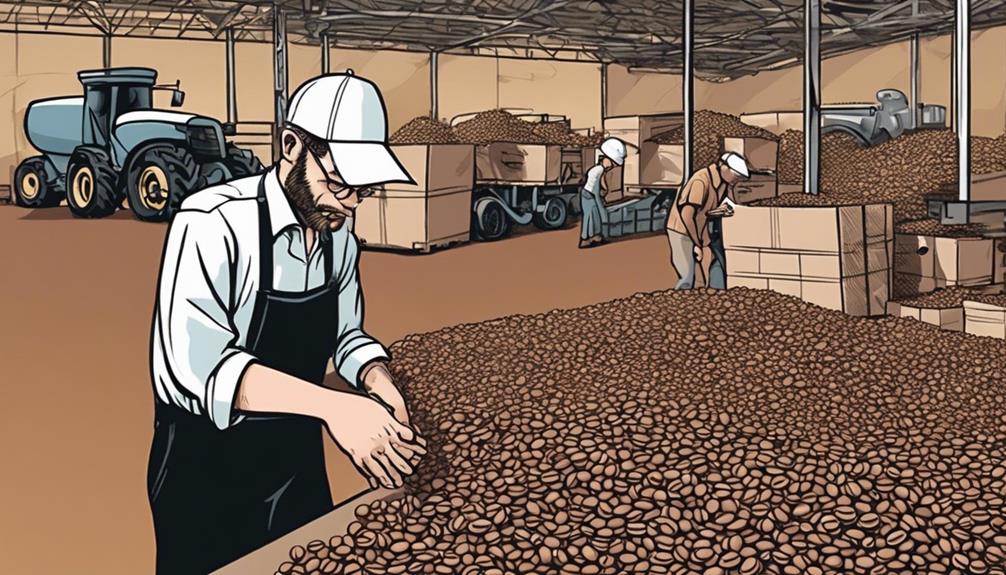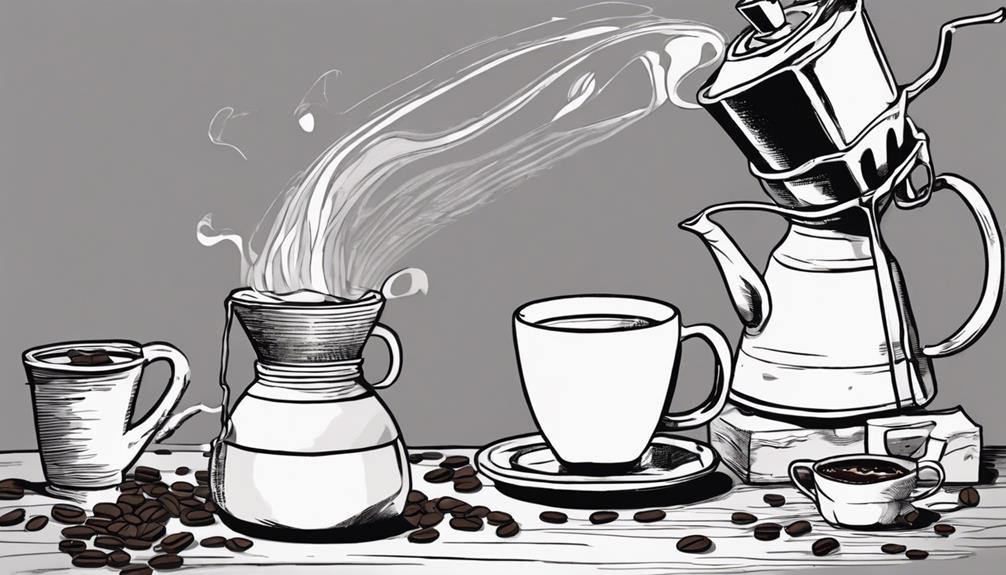Coffee beans do not belong to the legume family. They are actually part of the Rubiaceae family and are found inside coffee cherries as separate seeds. Legumes, on the other hand, are members of the Fabaceae family and have seeds enclosed in pods. The main botanical difference between coffee beans and legumes is their plant families and how they grow. If you are interested in learning more about the distinctions between these two types of plants, there is a wealth of information available for you to explore.
Key Takeaways
- Coffee beans are not legumes; they are seeds inside cherries.
- Legumes come from the Fabaceae family and have seeds enclosed in pods.
- Coffee beans belong to the Rubiaceae family, distinct from legumes.
- Legumes are high in protein and fiber, unlike coffee beans.
- Botanically, coffee beans and legumes differ in plant family and growth habits.
Coffee Bean Classification
In the domain of coffee bean classification, it's important to understand their distinction from legumes. Coffee beans come from the Rubiaceae family, while legumes belong to the Fabaceae family. One key aspect that sets coffee beans apart is their growth inside a coffee cherry. Unlike legumes that develop in pods, coffee beans grow within these cherries.
It's within these cherries that the green coffee beans are found, each containing the potential for that beloved cup of coffee. The misconception that coffee beans are legumes may arise from their visual resemblance and the way they're processed. However, despite these similarities, coffee beans and legumes are botanically distinct due to their differing plant families and growth habits.
Understanding this distinction is essential in appreciating the unique journey that coffee beans take from being nestled inside a coffee cherry to being brewed into a delightful cup of coffee.
Botanical Distinction

Coffee beans, despite their bean-like name, aren't classified as legumes botanically.
Legumes, such as beans and lentils, belong to the Fabaceae family, while coffee beans hail from the Rubiaceae family.
The distinction lies in the seeds' arrangement, with legumes enclosed in pods and coffee beans nestled within cherries, setting them apart in plant classification.
Legume or Berry?
When determining the botanical distinction between coffee beans and legumes, it becomes evident that they differ in their plant family classification. Legumes belong to the Fabaceae family, while coffee beans come from the Rubiaceae family. Legumes, such as beans and lentils, are known for their pods that split open to reveal the seeds, whereas coffee beans are the seeds found inside the coffee cherry. This distinction highlights the unique botanical origins of these two seed types.
To further illustrate this difference, refer to the table below:
| Legumes | Coffee Beans |
|---|---|
| Belong to Fabaceae family | Belong to Rubiaceae family |
| Pods split open to reveal seeds | Seeds found inside coffee cherry |
| High in protein and fiber content | Valued for caffeine content and flavor profiles |
Understanding these botanical disparities can help clarify the misconception that coffee beans are classified as legumes.
Plant Classification Debate
The botanical distinction between coffee beans and legumes lies in their plant family classifications. Coffee beans, despite their name and appearance, aren't classified as legumes. Legumes, such as beans and lentils, belong to the Fabaceae family, while coffee plants are categorized under the Rubiaceae family.
This fundamental difference in plant taxonomy dictates that coffee beans are seeds derived from the coffee cherry fruit, while legumes are seeds enclosed within pods. The confusion often arises due to the colloquial use of the term 'bean' for both legumes and coffee seeds.
However, botanically speaking, coffee beans are individual seeds found within cherries, distinct from the multiple-seeded pods characteristic of legumes. Understanding this botanical dissimilarity is important in clarifying the classification of coffee beans as seeds, not legumes, based on their distinct plant family categorizations.
Coffee Bean Anatomy
Within botany, the distinction in anatomy between coffee beans and legumes is essential for understanding their categorization. Coffee beans are the seeds found inside the pit of coffee cherries, making them the seed of a fruit, while legumes are the seeds located inside pods of leguminous plants like peas and beans.
The botanical dissimilarity is rooted in the plant sources and the structure in which the seeds develop. Coffee beans originate from the Coffea plant species, whereas legumes stem from various plant families like Fabaceae. Despite both being seeds, they arise from different types of plants with unique growth patterns.
This disparity underscores the importance of recognizing the intricate anatomical variances between coffee beans and legumes to accurately classify them within the botanical domain. Understanding these distinctions sheds light on the diverse origins and structures of these seeds, highlighting the complexity and diversity present in the plant kingdom.
Legume Comparison
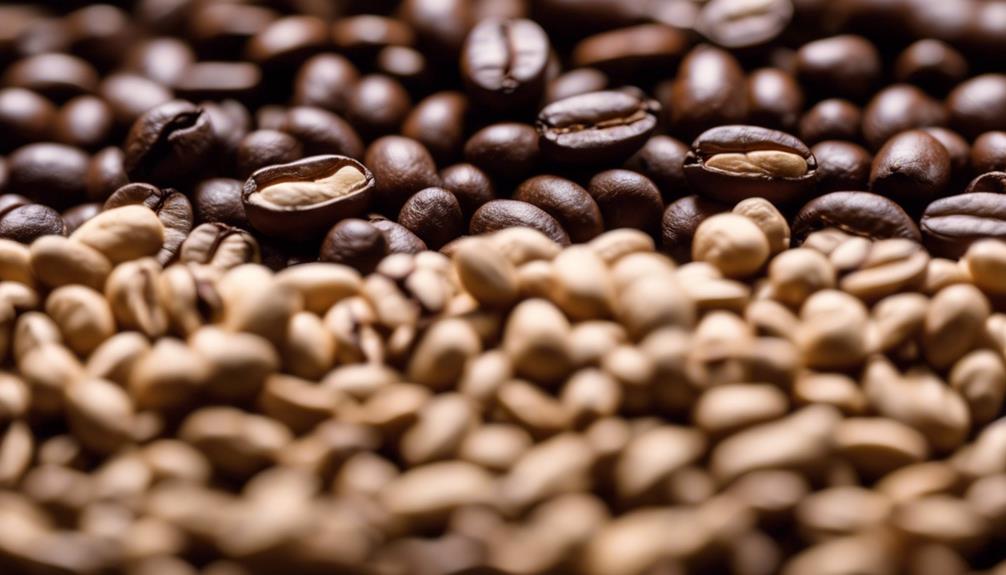
Comparatively, legumes, such as beans and lentils, are distinct from coffee beans in their botanical classification and nutritional composition. Legumes, belonging to the Fabaceae family, are typically harvested for their pods, providing a rich source of protein and fiber.
On the other hand, coffee beans, originating from the Coffea plant, are considered seeds rather than true legumes as they develop within the coffee cherry. Despite some similarities in appearance and taste, coffee beans are primarily valued for their caffeine content and flavor profile, differing markedly from the nutrient profile of legumes.
While legumes are renowned for their high protein and fiber content, coffee beans are cherished for their stimulating properties. It's essential to recognize these botanical and nutritional disparities between legumes and coffee beans to appreciate the diverse roles they play in culinary and agricultural contexts.
Culinary Use Differences
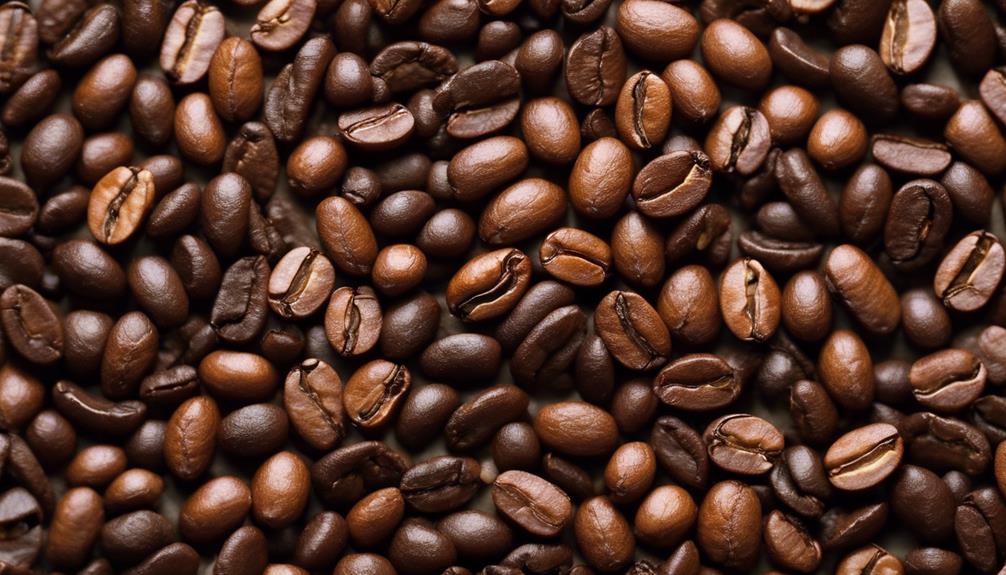
When considering culinary use differences between legumes and coffee beans, their distinct preparation methods highlight their diverse roles in cooking and consumption.
- Legumes like beans and lentils are commonly cooked and used in savory dishes, providing a source of protein and fiber in various cuisines. On the other hand, coffee beans are roasted and ground to create the popular beverage known as coffee, appreciated for its stimulating effects and rich flavor profile.
- Legumes are typically the seeds found in pods of plants like peas and soybeans, offering nutritional value that makes them a staple in many vegetarian and vegan diets. Meanwhile, coffee beans are actually the seeds of a fruit, containing caffeine and other compounds that contribute to the unique taste and aroma of coffee.
- While legumes are versatile ingredients used in a wide range of dishes, coffee beans are specifically processed to brew coffee, emphasizing their role as a beloved beverage rather than a cooking ingredient.
Seed Vs. Legume
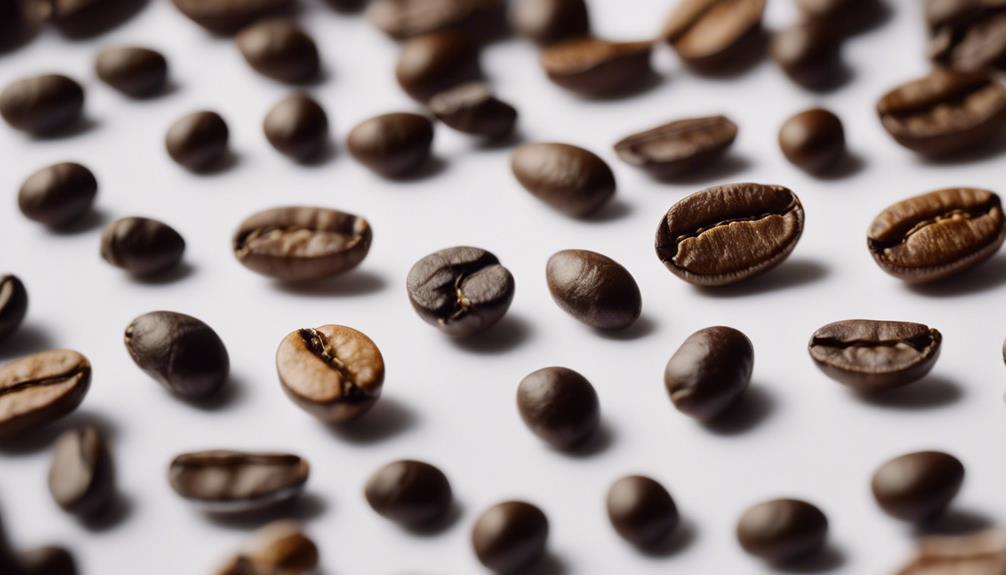
Coffee beans, despite their name, aren't legumes but rather seeds found within the coffee cherry.
Legumes, such as beans and peanuts, belong to a distinct category of fruits.
Understanding this fundamental difference between seeds and legumes sheds light on the botanical origins of coffee beans.
Seed Classification Explanation
Legumes are distinguished from regular seeds by developing from pods and belonging to the Fabaceae family. When it comes to the classification of seeds and legumes, understanding the key differences is important. Here's a breakdown to clarify any confusion:
- Development: Legumes, such as beans, peas, and lentils, develop from pods, while seeds are the fertilized ovules of plants, including those found in various fruits.
- Botanical Family: Legumes fall under the Fabaceae family, known for their high protein content and nitrogen-fixing abilities, setting them apart from other seed types.
- Coffee Beans: Despite being commonly referred to as beans, coffee beans are technically seeds found inside the coffee cherry fruit. Their classification as seeds rather than legumes is based on their unique growth and structural characteristics within the fruit.
Understanding these distinctions helps in recognizing the diverse range of seeds and legumes present in the botanical world.
Legume Characteristics Overview
Legume characteristics can be distinguished from standard seeds by their unique attributes within the plant kingdom. Legumes, including beans, peas, and lentils, are part of the Fabaceae family, known for their high protein and nutrient content.
One key feature of legumes is their ability to fix nitrogen in the soil, enhancing overall plant growth. These plants bear pods that contain seeds, with the seeds serving as the edible portion rich in essential nutrients like fiber and vitamins.
It's important to note that coffee beans, although often referred to as beans, are technically seeds located within the coffee plant's fruit and don't fall under the legume classification. While coffee beans share similarities with legumes in terms of being seeds enclosed in a fruit, they differ botanically from true legumes like beans and peas.
This distinction highlights the diverse array of seed types found in the plant kingdom, each with its own unique characteristics and classifications.
Coffee Bean Classification
Within the botanical categorization domain, a key distinction arises when differentiating between coffee beans and legumes. Coffee beans are classified as seeds, not legumes, as they're the seeds found inside the coffee cherry fruit.
Legumes, such as beans and peas, belong to the Fabaceae family, while coffee beans come from the Rubiaceae family. While coffee beans share similarities with legumes regarding their shape and texture, they're botanically classified as seeds.
Legumes grow in pods, while coffee beans are the seeds of the coffee cherry that need to be extracted and processed. Understanding the botanical classification of coffee beans as seeds helps differentiate them from true legumes like beans and peas.
Nutritional Variance

With their significant protein and fiber content, coffee beans demonstrate a nutritional profile that sets them apart from other plant foods.
While coffee beans aren't classified as legumes, they do contain some protein and fiber, though in smaller amounts compared to true legumes.
The protein in coffee beans isn't as complete as that found in legumes, lacking some essential amino acids important for human nutrition.
Additionally, coffee beans lack the significant amounts of iron, magnesium, and potassium typically found in legumes.
Despite this, coffee beans offer antioxidants and caffeine, which can provide certain health benefits when consumed in moderation.
It's noteworthy that the nutritional value of coffee beans can vary depending on factors such as the roasting process and brewing method.
Therefore, while coffee beans may not match the nutritional powerhouse status of legumes, they still offer some unique compounds that can contribute positively to your diet.
Coffee Plant Family
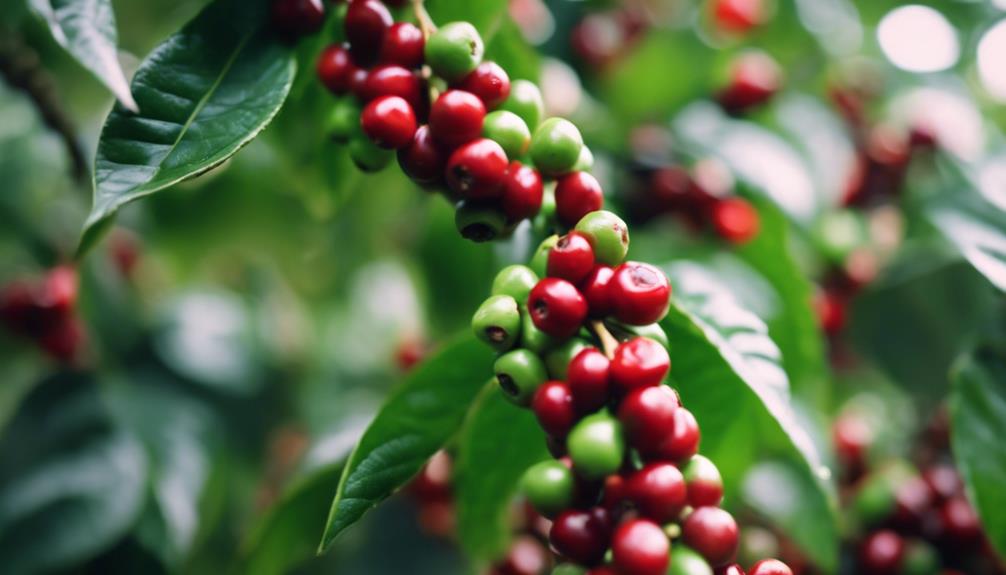
Coffee plants, belonging to the Rubiaceae family, encompass a diverse array of species that include other well-known plants like gardenias and quinine. Within the Rubiaceae family, you can find over 13,000 species of flowering plants, showcasing a wide botanical variety.
Here are some key points to understand about the coffee plant family:
- Genus Coffea: The coffee plants fall under the Coffea genus within the Rubiaceae family, with approximately 124 different species identified. Among these, Coffea arabica and Coffea canephora (commonly known as Robusta) stand out as the most extensively cultivated species for coffee production.
- Plant Diversity: The Rubiaceae family not only includes coffee plants but also features a range of other tropical and subtropical plants like gardenias, quinine, and cinchona. This diversity highlights the importance and widespread presence of plants within this botanical family.
- Cultivation Importance: The Rubiaceae family's diverse range of species plays a significant role in horticulture, pharmaceuticals, and agriculture, with coffee plants being just one of the many valuable contributions from this botanical group.
Coffee Bean Composition

Containing a diverse array of compounds such as caffeine, alkaloids, proteins, and chlorogenic acids, coffee beans have a complex chemical composition that contributes significantly to their flavor and health attributes. Additionally, these beans consist of amino acids, carbohydrates, and lipids, all playing important roles in defining the unique taste and composition of coffee. The distinction between green and roasted coffee beans is significant, as green beans possess a different chemical makeup due to their unroasted state.
The chemical composition of coffee beans not only influences their taste but also contributes to potential health benefits. For instance, chlorogenic acids within coffee beans have been linked to antioxidant properties and potential health advantages. Furthermore, the volatile compounds present in green coffee beans play a pivotal role in shaping the overall flavor profile and aroma of the brewed coffee, showcasing the intricate relationship between chemistry and sensory experience in the world of coffee.
Common Misconceptions

Often mistaken for legumes due to their appearance, coffee beans are actually seeds that grow inside the fruit of the coffee plant. Despite their legume-like look, they belong to the Coffea plant genus, not the Fabaceae family like true legumes such as beans and lentils. Here are some key distinctions:
- Botanical Classification: Legumes, like beans and lentils, are classified under the Fabaceae family, while coffee beans are part of the Coffea plant genus.
- Nutritional Content: Legumes are valued for their high protein content, making them a staple in many diets. On the other hand, coffee beans contain caffeine and other unique compounds specific to the coffee plant, offering a different set of benefits.
- Distinct Identities: While both legumes and coffee beans hold nutritional value, they're fundamentally distinct. Legumes are prized for their protein, while coffee beans are celebrated for their rich flavor profiles and stimulating effects.
Frequently Asked Questions
Are Coffee Beans a Legume?
No, coffee beans aren't legumes. They're seeds found inside the coffee cherry fruit, belonging to the Coffea genus.
Legumes, like beans and peas, are part of the Fabaceae family, while coffee beans come from the Rubiaceae family.
Despite some visual similarities, coffee beans are seeds, not legumes. They differ botanically due to their distinct plant families and growth structures.
It's important to recognize these differences for accurate categorization.
What Is a Coffee Bean Classified As?
A coffee bean is classified as a seed, specifically the seed found inside the fruit of the coffee plant.
Despite being commonly referred to as beans in culinary terms, they don't fall under the botanical classification of legumes.
Legumes, such as beans, lentils, and peas, are distinct from coffee beans due to their pod-like fruits and seeds.
What Kind of Beans Are Coffee Beans?
Coffee beans, despite their name, aren't legumes. They're actually seeds that come from the Coffea plant. Bringing coffee beans into the UK has become a popular trend as more people seek out high-quality, responsibly-sourced beans. The process of importing coffee beans involves careful inspection and certification to ensure they meet the UK’s strict standards for food safety and quality. Once they arrive, these beans go through a meticulous roasting and packaging process before they end up in the hands of eager coffee enthusiasts.
Legumes, like beans and lentils, belong to the Fabaceae family, while coffee beans have a different botanical origin.
Are Coffee Beans Actually a Type of Nut?
No, coffee beans aren't a type of nut. They're actually seeds that grow inside the fruit of the coffee plant.
While they may share similarities in texture and flavor when roasted, coffee beans are distinct from nuts.
Understanding that coffee beans are seeds, not nuts, is important in clarifying their botanical classification.
Conclusion
To sum up, while coffee beans may resemble legumes in some ways, they don't fall under the botanical classification of legumes.
Despite common misconceptions, coffee beans are actually seeds from the coffee plant, distinct from true legumes like peas and beans.
So, next time you enjoy your morning cup of coffee, remember that you're savoring the unique taste of seeds, not legumes.
Keep brewing, coffee lovers!


